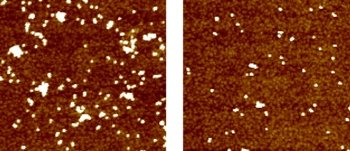A research team at the National Institute of Standards and Technology (NIST) has devised a new procedure to manipulate the behavior of metal-based nanoparticles using a mild electric current. The technique will help determine the hazardous effects of nanoparticles on cell cultures.
 NIST's new method to study Nanotoxicology
NIST's new method to study Nanotoxicology
The new method allows the on-demand release of nanoparticles from a surface that captures them by influencing their properties with the help of a mild current. It collects the nanoparticles in a layer with one particle thickness, enabling them to be dispersed uniformly into a fluid sample and in turn decreases clumping, a usual problem that can disguise the properties of nanoparticles when they come across living tissues.
Darwin Reyes, a physicist at NIST, stated that these benefits offered by the new method makes it suitable for toxicology studies. The NIST method allows a controlled release of nanoparticles into a fluid stream passing through a group of cells, enabling researchers to study the reactions between the living cells and the nanoparticles, such as the response of living cells with respect to the concentration of the nanoparticles.
For this method, the research team utilized a gold surface coated with positively charged, long molecules. Gold-based nanoparticles are coated with citrate molecules, which have a mild negative charge. The negative charge of the citrate molecules attracts the nanoparticles to the surface and the passage of a mild electric current breaks the attraction. Reyes stated that since the surface coating could be designed to capture diverse types of materials, different types of nanoparticles can be trapped and released with the new method.